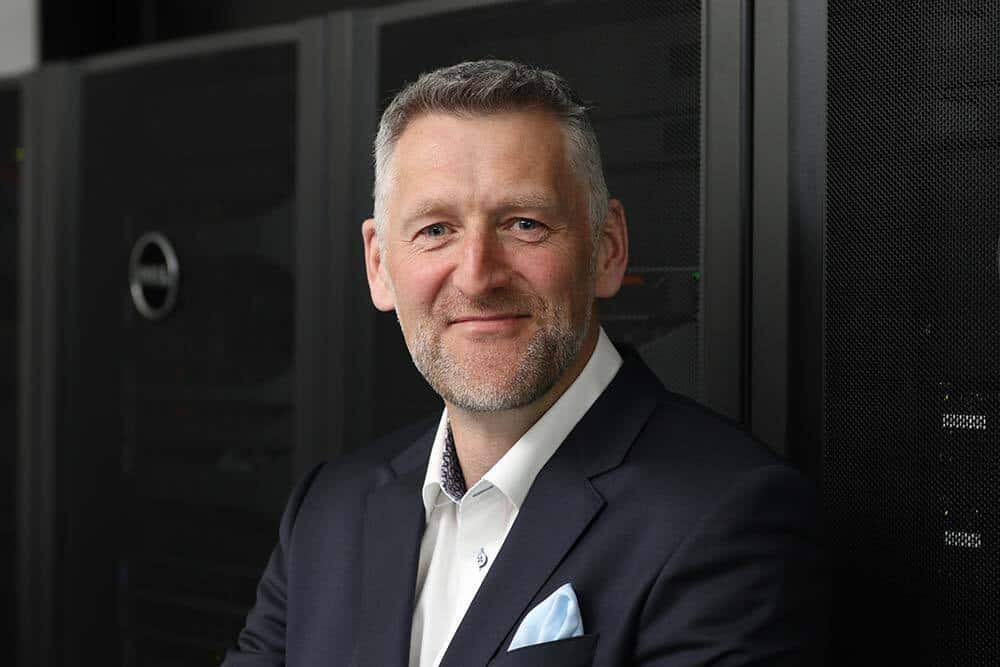Pictured: Jason Ward, Vice-President and Managing Director, Dell Technologies Ireland
Jason Ward, Vice-President and Managing Director of Dell Technologies Ireland, discusses how best to navigate the transition to working from home from a security point of view.
Remote working is quickly becoming a new reality for many businesses in Ireland. As we all look to protect the health and well-being of our employees and comply with government guidelines, companies are now finding themselves in a position of having their entire workforce operating from their own homes. In many instances, their supporting tools were not designed for large-scale remote interaction and engagement.
This transition can pose a major challenge for those unfamiliar with remote working. Businesses are faced with a new reality of having to support their workers with the applications, and tools for communication and collaboration they need to be productive. Work stops without the right tools for remote work.
There is also no time for on-the-job learning. The urgent need to respond and react to situations as they emerge means that everything must be done in real-time with no time for trial and error. Employees need to securely access files, host meetings, video conferences and collaborate on documents with colleagues. Mobilising a workforce to take account of a rapidly changing environment above all requires a strategy.
Until recently, many sectors were keen to hang on to traditional ways of work. There was a feeling or claim that certain types of jobs or sectors didn’t lend themselves to remote working. This experience, despite it not being one of our choosing, has shown that every sector can function remotely. Differently? Perhaps. But effectively? Yes. Nearly three out of four finance leaders surveyed earlier last week by Gartner said they plan to move at least 5% of their workforce that had previously reported to an office to a full-time, remote schedule.
As the future of work transforms before our eyes, there’s one thing to keep top of mind. A successful remote workforce is a secure workforce.
With thousands of employees suddenly working from home, businesses may unknowingly be exposing their operations and people to new cyber-security risks. It is not simply enough that the network is stable, and everyone can connect remotely at the same time. You also have to consider the security and safety of the data on your systems and network.
Owners and managers must move quickly to adapt to this changing cyber-security landscape. Firewalls, endpoint detection, virtual desktop infrastructure and encrypted communications are all added protections that can be introduced today to combat the effects of costly disruptions.
This all comes at a time when the number of cyber-attacks is on the rise and businesses are already struggling to meet the new threats that will emerge in 2020. According to our own Global Data Protection Index 7 in 10 are expecting to face a cyber-attack this year while 80% of businesses do not have the adequate protections to secure the growing volume of data they generate. Many organisations across the country have been faced with new cyber-security challenges as they their teams now work from home. If we look back at last year, there were 152 million ransomware attacks in the first three quarters of 2019 alone.
The message is clear. Make security the starting point of remote working, not simply an afterthought. It must be embedded in everything you do as a business and become a central strand of your company’s DNA and culture.
That culture will need to evolve to the meet the changing needs of the workforce. It will require new supports that extend beyond the four walls of the office and through a screen, ensuring there’s an inclusive and productive atmosphere irrespective of where your team members are.
The responsibility for shaping that culture rests not just with IT leaders, but with the entire senior leadership team. If done successfully, it can result in positive and long-lasting change – transforming perceptions about the future of work in many industries and re-imagining business models in light of the changes which seemed unimaginable a few short weeks ago.
This has been our experience at Dell Technologies. Since first rolling our Connected Workplace Programme in 2009, remote working has become standard practice for our team members with our senior leaders, including Michael Dell, driving a change in how we view work – it is what you do and not a place you go.
How have we achieved this? Ultimately, it’s has been by taking a security-first approach to remote working. From built-in security features within our technology to dedicated training and support networks for our employees, we’ve been able to create an inclusive culture that is focused on the results we can achieve for customers. With technology doing the heavy lifting by providing a ready-to go remote experience, Dell Technologies has focused on our workplace being accessible to all.
As we all approach this new way of operating, it is important to recognise that while the initial move to remote working has been swift, action must be taken to ensure that it is secure and successful in the medium to long term. It will take time to find the right approach and shape the supportive culture that meets the needs of every member of the team.
Consider what can be done to support your team as they face the new challenge of working from home while also considering the role of remote working and a flexible workplace as part of the recovery period. Together, we can successfully and safely navigate the move to remote working over the coming weeks while also keeping focused on the long-term impacts it will have on the way we work and do business in the years to come. As we look ahead, we will need to consider how we’ll re-create those water cooler conversation moments.






